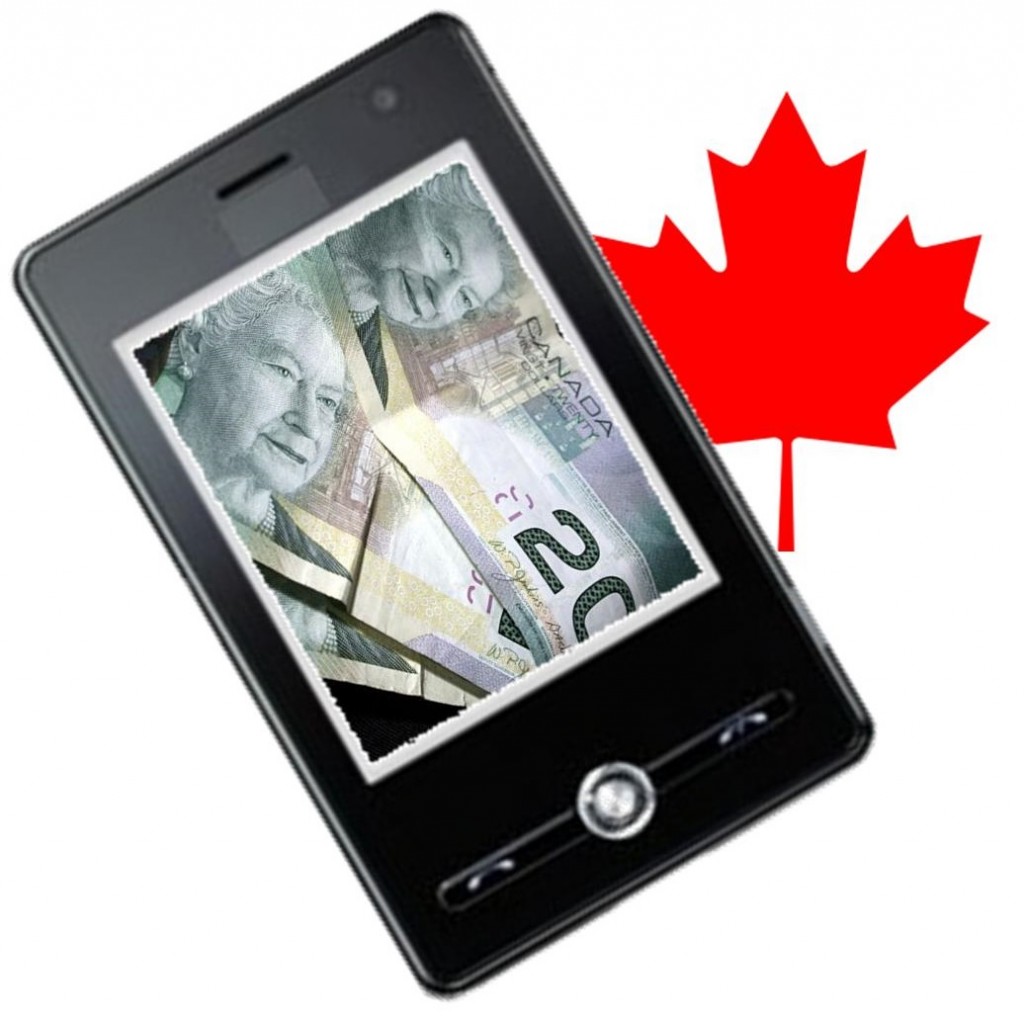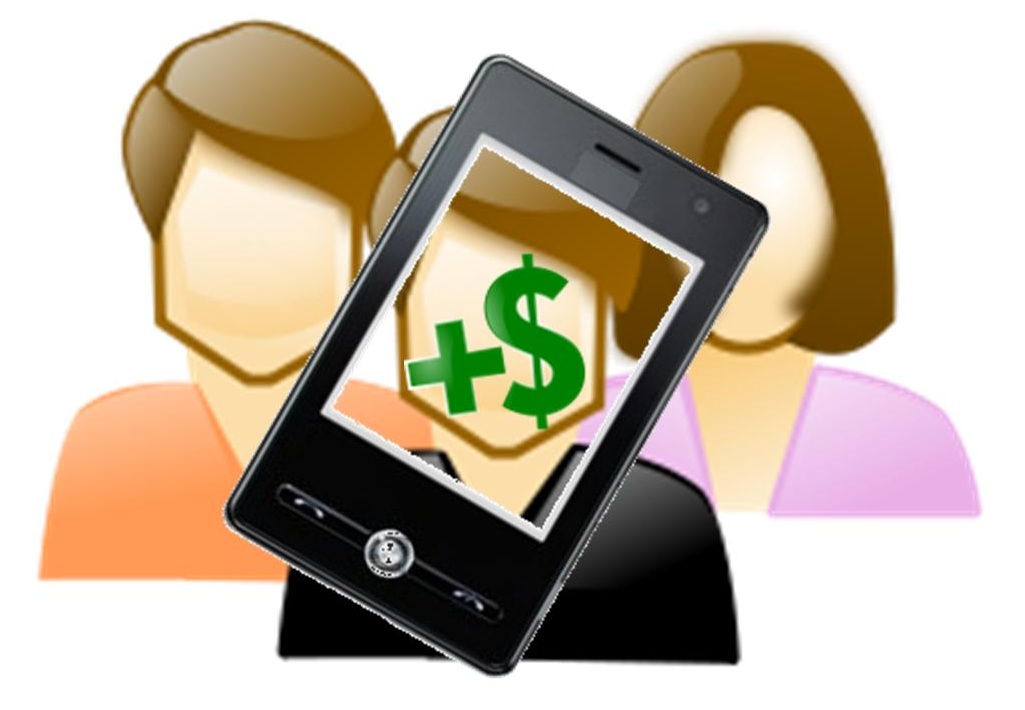Canadians still prefer cash, but they are slowly starting to pick up their smartphones to make purchases.
According to the latest report from Technology Strategies International, a research firm, there is a very slow but upward growth of contactless mobile payments in Canada, to the degree that it will one day replace the current leader, cash.
The most recent report said that over half of Canadian smartphone owners had used their device for a transaction.
The report was called Canadian Payments Forecast – 2013 and it stated that over half of the smartphone owners in Canada had made a purchase at some point in which they used mobile payments to complete the transaction. Most of those were in the form of remote transactions, such as paying a bill through their bank’s smartphone app, or purchasing a product over the internet.
The use of mobile payments while in stores remains quite low despite the fact that remote transactions are common.
 According to the Technology Strategies International president, Christie Christelis, “The incidence of in-store payments using mobile phones is very low.” Christelis went on to explain that “But with the increasing penetration of contactless payment acceptance terminals, coupled with the proliferation of NFC (near field communications)-enabled phones, we expect that by 2017 there will be almost 3 million regular mobile payment users in Canada.”
According to the Technology Strategies International president, Christie Christelis, “The incidence of in-store payments using mobile phones is very low.” Christelis went on to explain that “But with the increasing penetration of contactless payment acceptance terminals, coupled with the proliferation of NFC (near field communications)-enabled phones, we expect that by 2017 there will be almost 3 million regular mobile payment users in Canada.”
The report indicated that the primary mobile payments growth drivers within the marketplace in Canada include higher personal spending on products and services, as well as deeper electronic payments penetration of digital transactions into areas in which checks and cash had previously dominated.
Christelis explained that over the last two years, there has been a 20 percent increase in awareness of contactless mobile payments options that are available to consumers, adding that the familiarity with contactless cards as a transaction option is growing among Canadians, and those are being used more often. In that way, contactless transactions have already been making steps toward displacing the use of cash. It is expected by the report that this will become much more significant through the use of smartphones as well as cards, for the next five years.
 Recent research is showing that if this technology is going to take off, customers need a reason to use it.
Recent research is showing that if this technology is going to take off, customers need a reason to use it.
Although there is definite growth occurring in the world of mobile payments, there is still a massive amount of potential that is being left unused and a recent study is suggesting that part of the solution to this issue is in offering incentives to consumers.
Regardless of whether wallets, NFC technology, QR codes or other methods are used, consumers need a reason.
The struggle is primarily based on the fact that consumers are currently quite happy with the method and convenience of their cash, credit and debit cards. Therefore, there is not a significant amount of motivation for them to learn how to use mobile payments through their smartphones when they already feel that they have everything that they need.
At the moment, mobile payments have yet to answer the consumer’s question “what’s in it for me?”
The research in a survey of 4,000 people in the United States and Canada has indicated that consumers aren’t necessarily waiting for mobile payments to become more broadly available. Instead, they want to know why using the technology would be of any value to them in the first place. They are concerned about issues such as security, privacy, and convenience – areas where they already feel relatively comfortable when completing transactions at the register.
The survey was conducted by Accenture in order to gain a better understanding of what would motivate Canadian and American consumers to start to use mobile payments as a larger part of their daily lives. What they determined was that making the infrastructure available wasn’t nearly enough. Consumers need to be shown how they can benefit by using their smartphones instead of cash, credit, and debit.
These mobile commerce incentives can be as straightforward ad discounts, rewards, or other value added strategies. The survey has indicated that these incentives will be enough motivation to turn many consumers toward using their smartphones instead of their traditional transaction methods.
Mobile payments services and retailers that understand this fact may be able to implement campaigns and strategies that will appeal to the consumer’s preferences and provide them with benefits that will encourage them to try the technology for the first time, and then become comfortable with using it more regularly, said the study.
 According to the Technology Strategies International president, Christie Christelis, “The incidence of in-store payments using mobile phones is very low.” Christelis went on to explain that “But with the increasing penetration of contactless payment acceptance terminals, coupled with the proliferation of NFC (near field communications)-enabled phones, we expect that by 2017 there will be almost 3 million regular mobile payment users in Canada.”
According to the Technology Strategies International president, Christie Christelis, “The incidence of in-store payments using mobile phones is very low.” Christelis went on to explain that “But with the increasing penetration of contactless payment acceptance terminals, coupled with the proliferation of NFC (near field communications)-enabled phones, we expect that by 2017 there will be almost 3 million regular mobile payment users in Canada.”
 Recent research is showing that if this technology is going to take off, customers need a reason to use it.
Recent research is showing that if this technology is going to take off, customers need a reason to use it.